News
Firearms in the Powder River Country Feature of Program

On Saturday, August 20, at Fort Phil Kearny and the Kearney Hall, the Fort Phil Kearney/Bozeman Trail Association, in conjunction with SCLT and Sheridan County Sportsman Association, presented a day-long program titled, Firearms that Influenced the Powder River Country. The Sheridan County Sportsman Association paid admission to the fort for all the attendees.
Bob Wilson, retired superintendent at Fort Phil Kearny, presented the first program about the firearms used at Fort Phil Kearny and along the Bozeman Trail. There were several mannikins dressed in various styles of frontier clothing, from Plains Indian dress, the mountain man’s clothing, and various uniforms from the frontier cavalry and infantry up to the Spanish American War. He talked about the trade guns that Indians had on the frontier, and to make it easier to load and use on horseback they cut down the barrel. They could also trade hides and furs for steel knives, ax heads and metal arrowheads.
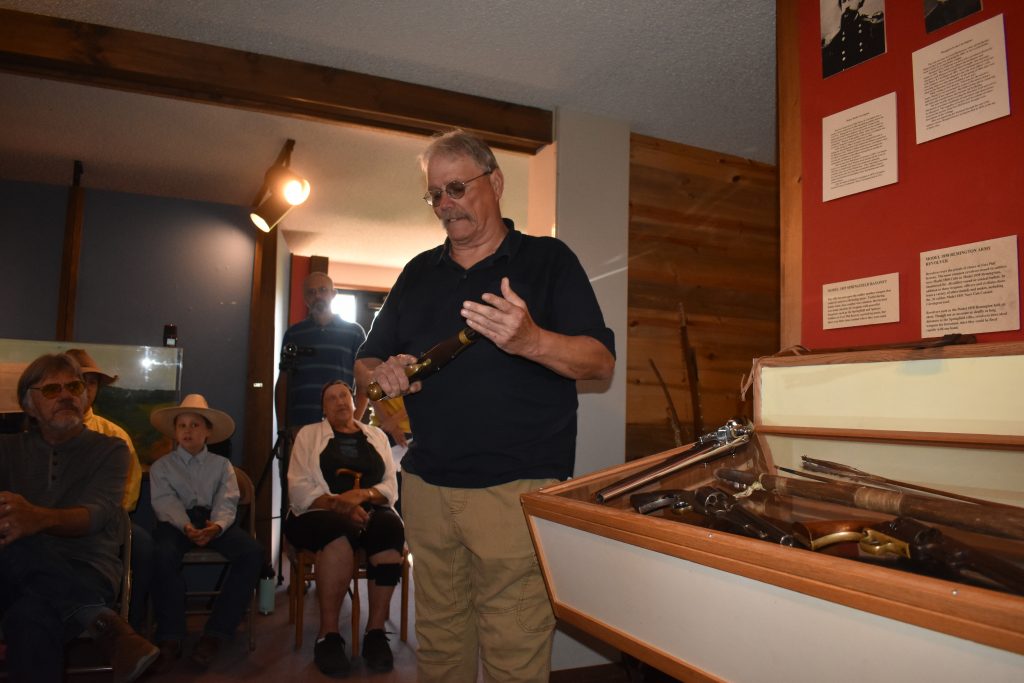
Wilson said that many of the weapons used by the army at the fort were left over from the Civil War, and a flintlock rifle, which was slow loading but was standard issue as well as a flintlock pistol, some were converted into a cap and ball pistol. They may have also carried a Navy Colt pistol.
Wilson said that the pistols were locked up in a magazine while the soldiers were in the barracks, due to the possibility of shooting quarrels over card games occurring among the soldiers.
About 50% of the infantry were new recruits, and many didn’t know how to shoot or even load the muskets. Those who had been in the Civil War knew how to shoot. Many of the old Civil War muskets were worn out. Also, the fort was always short of ammunition, so the firepower wasn’t the best.
Wilson said he had no idea why the fort was so under stocked with poor weapons and ammo, but one theory was that the soldiers weren’t there to engage the Indians, but just to keep them occupied while the building of the railroad was going on in southern Wyoming.
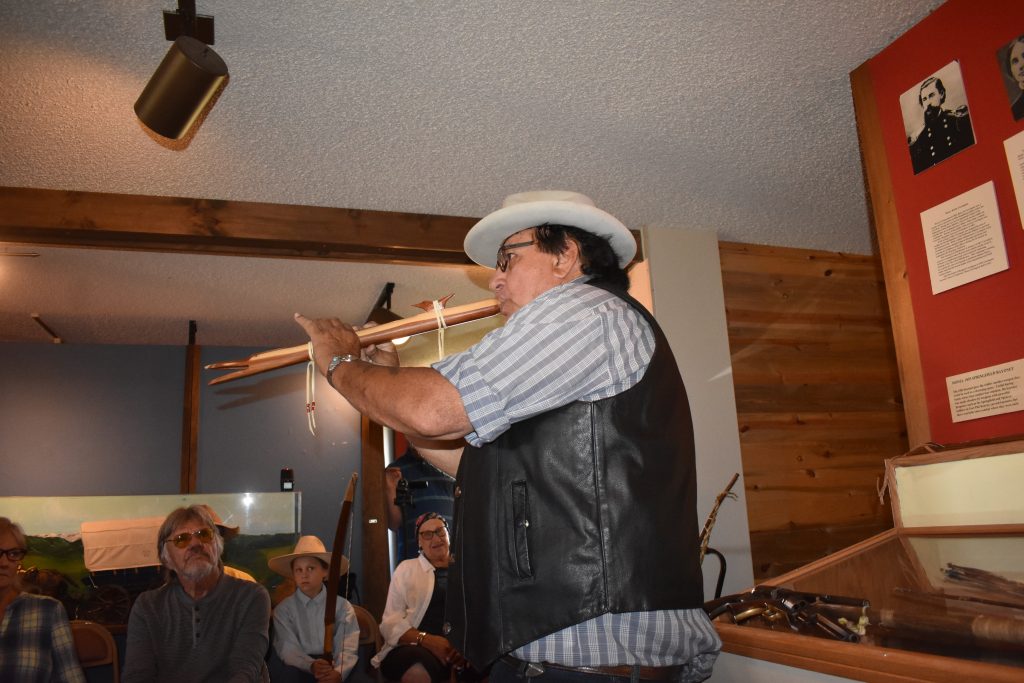
After Wilson’s talk, Donovin Sprague, enrolled member of the Miniconjou Lakota tribe, and on the Sheridan College History Faculty, focused his talk on Native American weaponry – bows and arrows and the firearms.
He talked about his family, Hump, or High Backbone and his son named Hump as well. Crazy Horse was also one of Sprague’s family. They were some of the chiefs in the Wagon Box Fight. He is also the author of ten books about his family and Lakota history.
He talked about the weapons used by the Indians, starting with spears, and then the atlatl, a spear-thrower, which gave them a lot more range when hunting. He said that using this meant they didn’t have to be right up on the animal stabbing it. With the coming of the horse, things changed for the Plains Tribes, making hunting easier.
Sprague also showed several bows and arrows, which revolutionized hunting and war for the tribes. He stated that the preferred wood for bow making is Osage Orange, and the Plains tribes traded for it, as it is not naive to the high plains. The Shoshone tribe often used big horn sheep horn to make bows as well.
In addition to talking about the native weapons, Sprague talked about how the Indians tanned the buffalo hide, first soaking it in water and then using the buffalo brains to tan the hide, making it soft and pliable for teepee covers or hair on hides for blankets and rugs. He said that each animal had enough brains to be used to tan the animal’s hide.
Sprague is a bow-maker and a flute maker, and he told the tale of how the Indian’s got the flute, then he played a flute solo for the crowd.
From 12 Noon – 1:00 there was lunch break at Kearney Community Hall, and following, from 1:00- 4 p.m. there were several presenters, including Danny Michael, Cody Firearms Museum Curator, who gave a talk about the history of firearms used on the Northern Plains, from the well-known to the ‘how did that get there?’
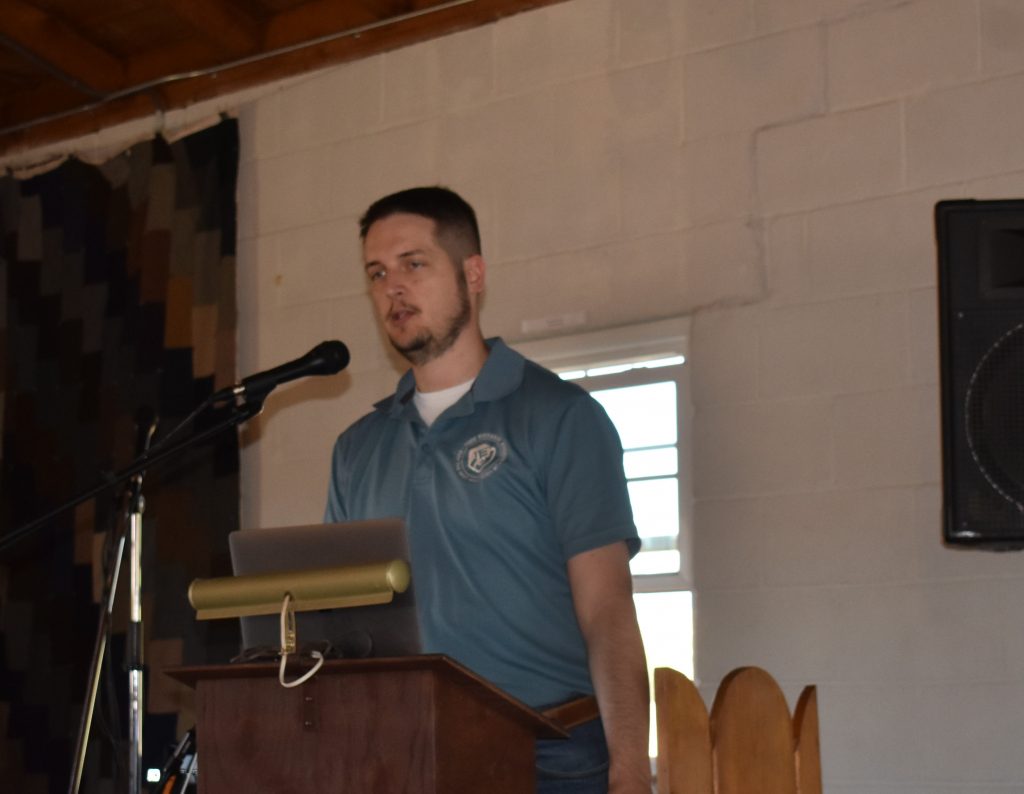
He started with the mountain men, and one of the most common mountain man firearms was the Birmingham Flintlock Muzzleloading pistol, like the one carried by Jedidiah Smith. He also mentioned the Hawkins Percussion rifle, another mountain man gun. They were popular in 1840 through 1860.
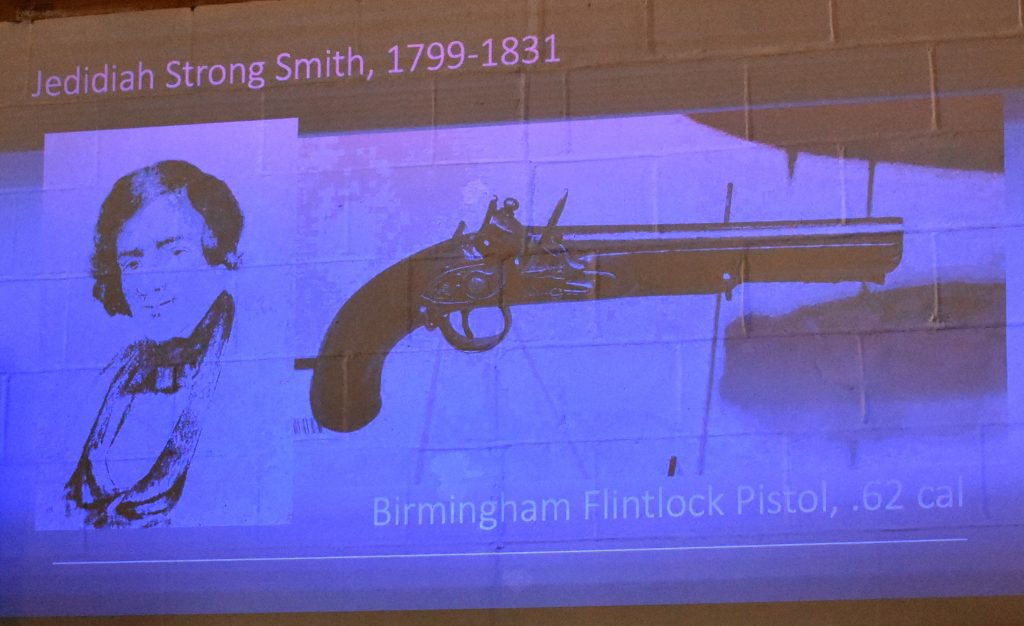
He talked about the homesteaders as well, a good fire arm was a necessity. One was a military musket 1816 started as a flintlock but was converted to a percussion. He said a lot of these were shipped out west. These were cheaper for the homesteaders and made a very effective shotgun.
He said that ex-Union solders in good standing could buy their service firearms from the government for around $6. One such rifle was the Spencer Repeating Rifle, and these were brought West as well.
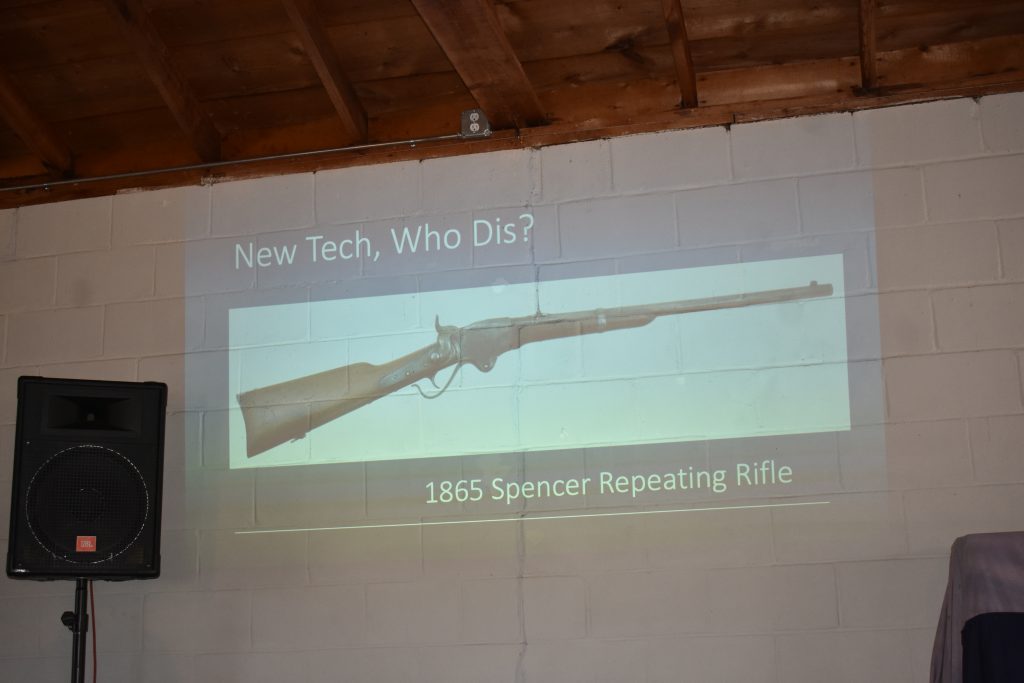
There were double barrel shotguns in the West, and the most popular and best known Western firearms, especially in the movies, were probably the 1873 Colt Revolver, and the 1870 Henry Repeating Rifle.
Carrie Edinger, SCLT Historic Program manager and Mike Kuzara of the Sheridan County Sportsmen’s Association presented a talk on the firearms related to the early cattle drives. They talked of the Texas Trail, a cattle trail in the late 1800s that traveled through northeastern Wyoming, around what is now the Moorcroft area.
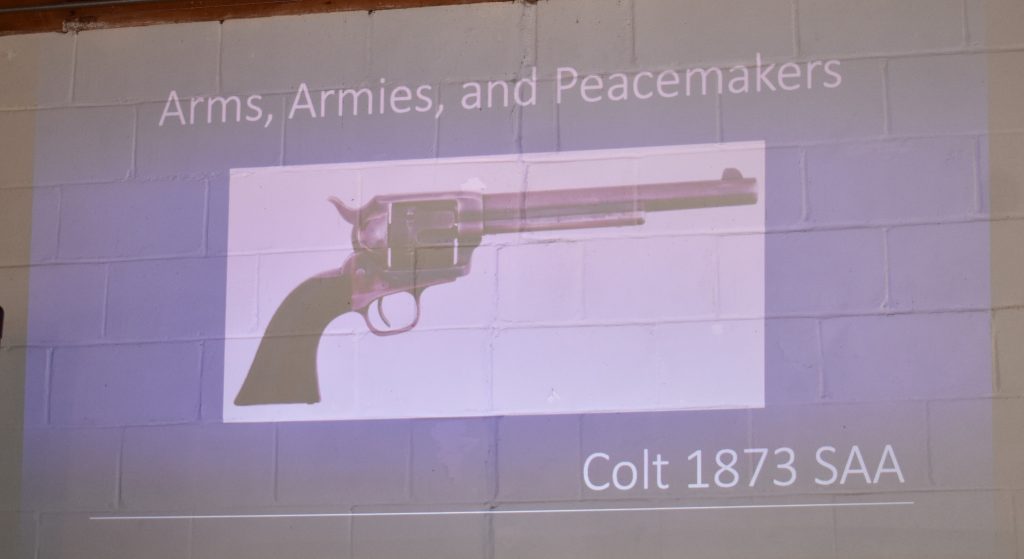
Rick Newton presented some Winchester history, and HP Puckett talked about the Kentucky rifle and various Plains rifles. Kuzara took the stage again and talked about several old guns that belonged to area homesteaders, and a Harrington and Richardson revolver his grandfather carried when he ran a saloon in Kuzaraville.
On Tuesday, September 13 beginning at 10:30 SCLT will present a tour of the O.P. Hanna Cabin near Big Horn. Hanna was the first permanent settler in Sheridan County. Also included will be the Bozeman Trail Museum. Watch Sheridan Media for more on this tour.

